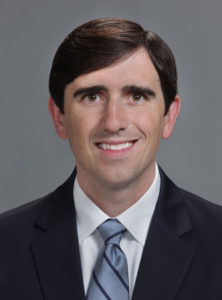Separated Shoulder Specialist

Are you an athlete who participates in contact sports? If so, you may be at risk of separating your shoulder. A separated shoulder is typically caused by blunt trauma to the shoulder or by a fall onto the shoulder. Separated shoulder specialist, Dr. Robert Boykin provides diagnosis and both surgical and nonsurgical treatment options for patients in Asheville who have suffered a shoulder separation. Contact Dr. Boykin’s team today!
What is the AC Joint?
An injury to the Acromioclavicular Joint (AC Joint) is usually caused from direct trauma to the shoulder (such as taking an aggressive hit during sports). This injury can also occur during a fall in which the patient lands directly on the shoulder. The AC joint serves to connect to collarbone (clavicle) to a specific part of the scapula (shoulder blade) called the acromion. The joint itself is held together by multiple ligaments and each end of the bone is capped by cartilage to allow some movement of the joint. This joint is very important as it connects the shoulder and arm to the more central skeleton through the clavicle. An AC joint separation is commonly referred to as a “shoulder separation”.
An AC joint injury causes damage to the ligaments and cartilage which hold the joint in place and allow it to function normally. The most common injury grading system used for AC joint injuries measures these as types 1-6. A type 1 AC joint injury is the mildest and may only indicate a sprain, whereas increasing numbers indicated a worsening level of injury measured by position and displacement between the clavicle and acromion. Shoulder specialist Dr. Robert Boykin focuses on the treatment of AC joint injuries for patients in Asheville, Arden, Fletcher and surrounding North Carolina communities.
AC Joint Grading
- Type I: AC joint sprain, X-rays appear normal
- Type II: AC joint advanced sprain, slight widening of joint on X-rays
- Type III: AC joint separation, the clavicle bone is higher than the acromion up to 100% (nearly completely separated)
- Type IV: AC joint separation, the clavicle is completely separated posteriorly (backwards)
- Type V: AC joint separation, the clavicle bone is higher than the acromion between 100 to 300% (complete severe separation)
- Type VI: AC joint separation, the clavicle is completely separated inferiorly (lower), extremely rare
What are AC Joint Injury Symptoms?
Symptoms that present with an AC joint injury vary according to the grade and severity of the separation. From a type 1 to a type 6, symptoms are typically progressively worse.
Symptoms associated with a milder (grade 1,2, some 3) injury may include:
- Tenderness directly over the AC joint
- Minor swelling
- Pain during lifting and moving
- Mild deformity (a small bump over the shoulder)
- Pain when bringing the arm across the chest
Symptoms associated with a more severe injury (some 3, 4, 5, 6) injury may include:
- Severe pain
- Inability to lift the arm
- Inflammation and swelling
- Pain to the touch
- Visible deformity (an easily noticeable bump which looks different than the other shoulder)
How to Diagnose an AC Joint Injury
During the initial visit Dr. Boykin will examine the shoulder in order to determine whether the injury is isolated to the AC joint or involves other aspects of the shoulder. On examination, patients with an AC joint injury usually have tenderness directly over the AC joint and pain when bringing their arm across the body. He will then determine the severity and grade of the injury through tests such as an X-ray and in some cases an MRI or CT scan. These tests allow Dr. Boykin to determine that the injury the patient is suffering is in fact originating from the AC joint.
Treatment Options for AC Joint Injuries
Dr. Boykin will attempt to treat the injury in the least invasive manner possible. A majority of the milder injuries can successfully be treated non-operatively (without surgery). He may initially recommend rest, icing to control inflammation, a sling for immobilization, and eventually physical therapy. For more severe injuries and those that have failed the non-operative treatments mentioned above, surgery may be recommended. A decision for surgery is made with the patient and also based on the patient’s goals and activities.
The ultimate goal during surgery to treat the AC Joint is to stabilize the joint and correct the separation of the clavicle and acromion. This may be done successfully through multiple different surgical techniques. Dr. Boykin most commonly uses an arthroscopic AC joint stabilization procedure using small incisions, a camera, and specialized instruments as the technique of choice. However in certain cases an open procedure may be necessary to give the best chance for an optimal outcome.
If you have any questions regarding AC Joint Injuries or would like to consult with Dr. Robert Boykin, orthopedic shoulder, knee, and hip surgeon, feel free to contact him at his practice serving Asheville, Arden, Fletcher and surrounding North Carolina communities.
